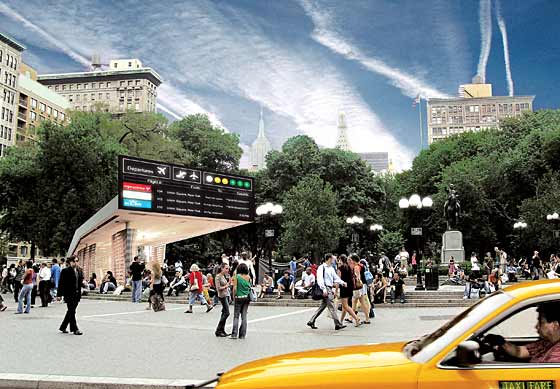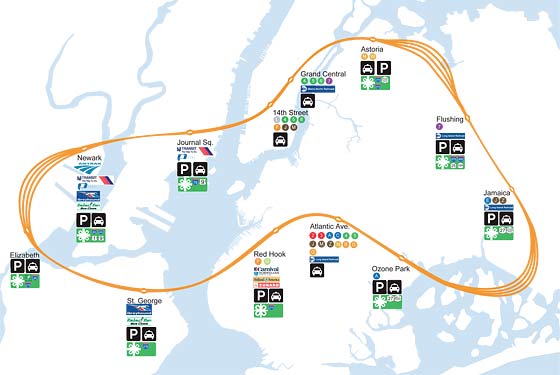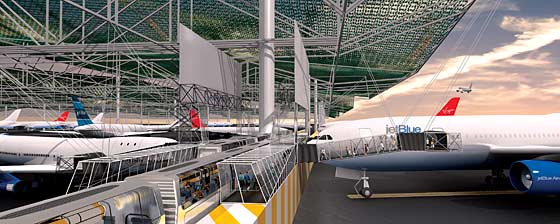
In SHoP’s plan, check-in would take place at hubs around the city. Then trains linked to specific flights would whisk you off to the airport. Photo: Photo-illustrations by SHoP Architects
No one doubts that the city needs a new airport: Our gateways to the sky are inconvenient, inefficient vestiges of decades past, their weaknesses made all the more apparent by the fact that the transport hub at the other end of a flight to or from New York is almost always sleeker and less chaotic than our three-headed monster (“LGA/JFK/EWR-berus”). So it was certainly nice to hear that the Port Authority is taking over the lease on Stewart International Airport with an eye toward expanding the sleepy former Air Force base. But must this new airport be 55 miles north of the city, closer to Woodstock than to Manhattan? (It’s in Newburgh, New York—you know, Newburgh? Right between New Windsor and Plattekill?) The idea is that Stewart will siphon off travelers who live north and west of town, and thereby alleviate the crushing burden on the other airports. But it does nothing to address the horrendous mass-transit system that feeds our airports, and, let’s be frank, it also lacks a certain pizzazz. So here’s another idea from SHoP Architects, which responded to our request for a superior fourth-airport proposal with a fascinating scheme for solving the space crunch using the ones we already have. It’s a high-speed-rail loop, in which trains would serve both as a means of conveyance to the airport and, in effect, as the airport. In a bold new check-in paradigm, passengers would get their boarding passes and go through security at special stations in Union Square and Red Hook (and Astoria and Grand Central and …), then hop on trains that would let them out directly at their plane. Such an approach would have the added benefit of reducing the airport space devoted to terminals, making room for more runways. Aviation experts will no doubt find holes to poke here—but this is our future-jet-age fantasy, and if Amsterdam can figure out how to put a commuter-rail depot underneath the airport food court, we can certainly get a few trains up and running. Port Authority, take heed!

The New, Improved JFK
1. More runways!
The current JFK covers 4,930 acres and has four runways. This plan would put eight in the same amount of space. More runways equals fewer delays.
2. Easier connections!
Coming from Miami to La Guardia, then leaving for Tokyo from JFK? No more sitting in traffic on the Van Wyck while your cab fare and chances of making the connection move in opposite directions.
3. A greener airport!
This massive “energy blanket” would shelter planes from rain and snow, provide solar power, and reduce the airfield’s contribution to summertime urban heat effect.
4. The end of fast-food ripoffs at the gate.
Flight pushed back? Status boards at each shuttle hub let you wait out the delay at local restaurants and coffee shops, instead of their overpriced airport equivalents.
The Shuttle System

Diagram by SHoP Architects

Photo-illustration by SHoP Architects

